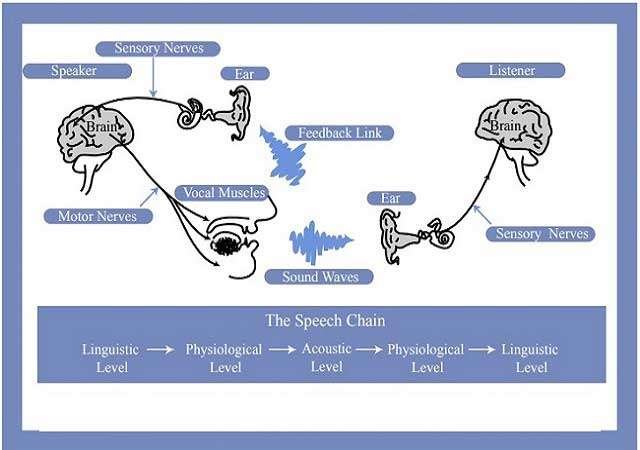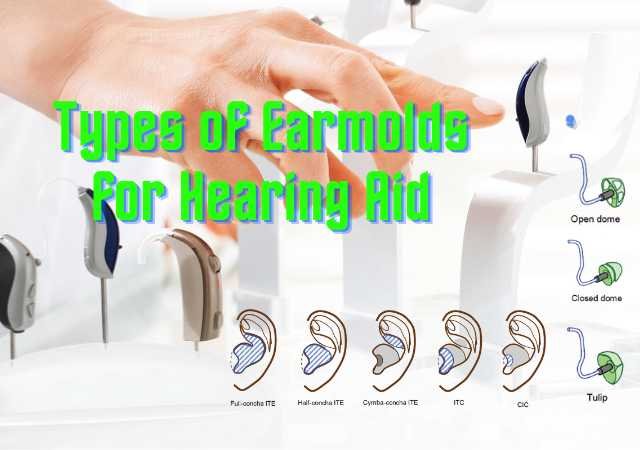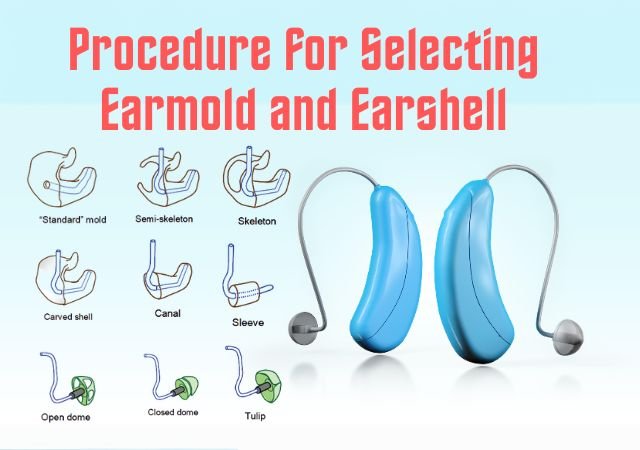The Speech Chain Model: The process of speech communication involves a series of actions connecting the speaker’s and the listener’s brains. This series of occurrences will be referred to as the speech chain. The different forms in which a spoken message exists in its progress from the mind of the speaker to the mind of the listener.

Linguistic level of Speech Chain
Words, which are arranged into sentences, are the foundation of speech creation. A word like “cat” comprises three of these segments since words are made up of syllables, which are created from phonemes (or segments). Discrete, binary features can be used to categorize the segments. Thus, /p/, /t/, and /k/ share the property of being voiceless, but /b/, /d/, /g/ are voiced, etc.
These six consonants all share the feature of being stop consonants. Therefore, language is represented digitally at this level. The word groups are arranged in accordance with syntactic constraints.
Physiological Level of Speech Chain
Words are made up of segments and features that include instructions for the articulators—the tongue, lips, larynx, etc.—on how to produce the sounds contained in the words. These directions specify how the various articulators are to be moved and coordinated by the muscles, and for a particular feature, there may be specific directions that rely on the context in which it appears. The articulators can only move so quickly before hitting a limit. Understanding the transition from the discrete language representation to the continuous articulator movements is a major issue.
Auditory Level of Speech Chain
Together with the passage of air from the lungs, the movements of the articulators create sound sources, which are then filtered by articulator-shaped acoustic cavities. Acoustics, source-filter theory, and signal processing are all ideas that are used in the physics of sound creation. The part of speech that may be heard the easiest is the sound that comes from a speaker’s lips. Both continuous and quantal elements can be heard in the sound. This sound strikes the listener’s ear, where it causes the eardrum to mechanically vibrate.
Auditory Physiological Level of Speech Chain
Physiology of the hearing The sound is transformed into mechanical motion, passes through some frequency analysis in the ear, and then is transformed into electrical activity in the auditory nerve and higher brain centers in a series of steps. To determine the intended word order at the language level, the listener must decode this sound. Identification or estimation of the segments and features underlying the sound pattern are probably necessary for decoding.
References:
⇒ SPEECH COMMUNICATION Prof. Kenneth N. Stevens 6.541J-24.968J-HST710J Spring 2004
⇒ Speech Science Primer (Sixth Edition) Lawrence J. Raphael, Gloria J. Borden, Katherine S. Harris [Book]
You are reading about:
The Speech Chain Model







0 Comments